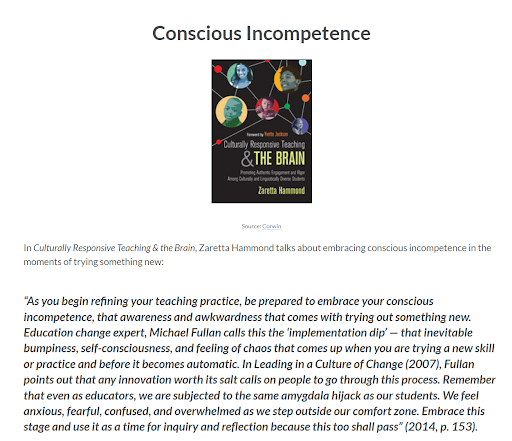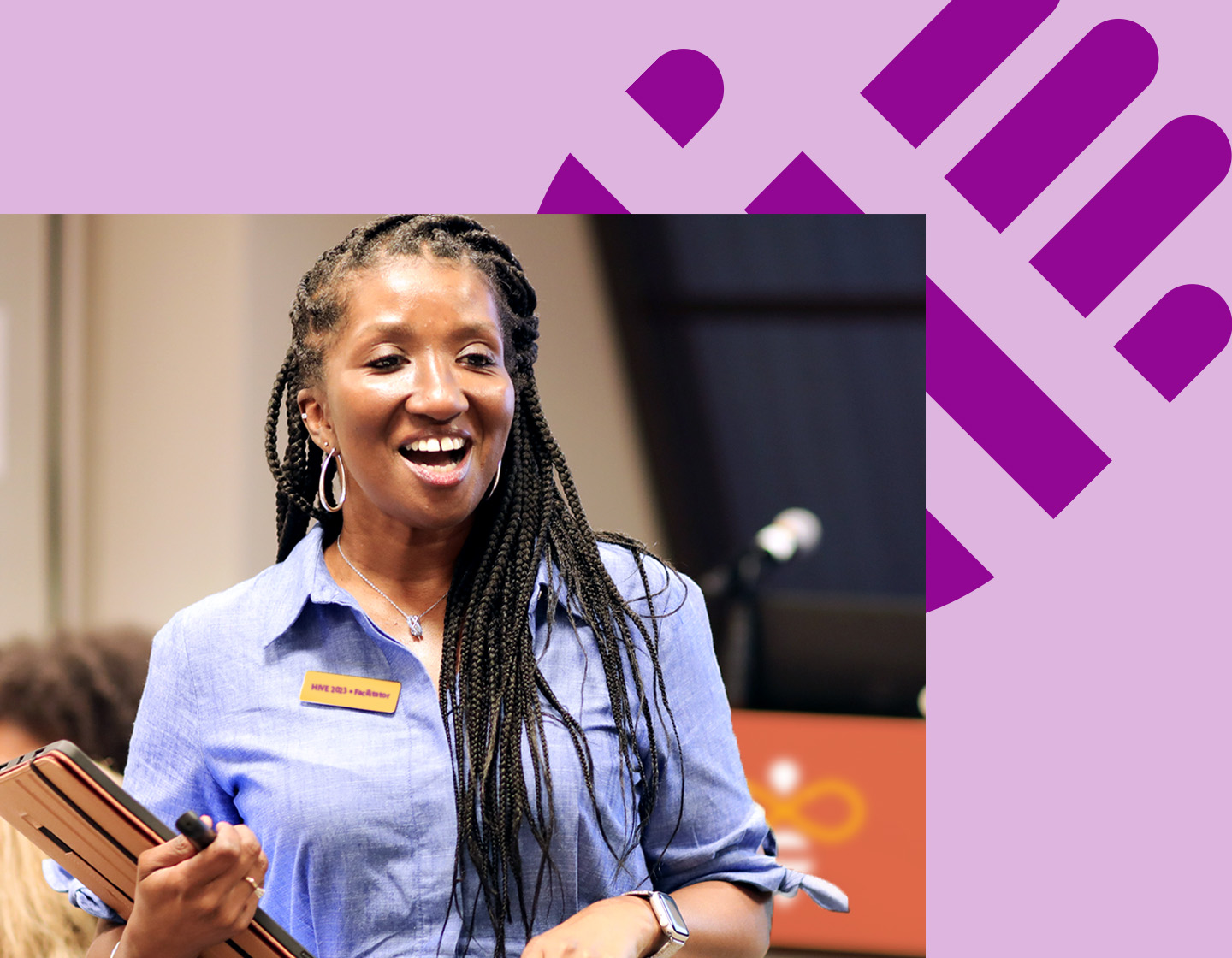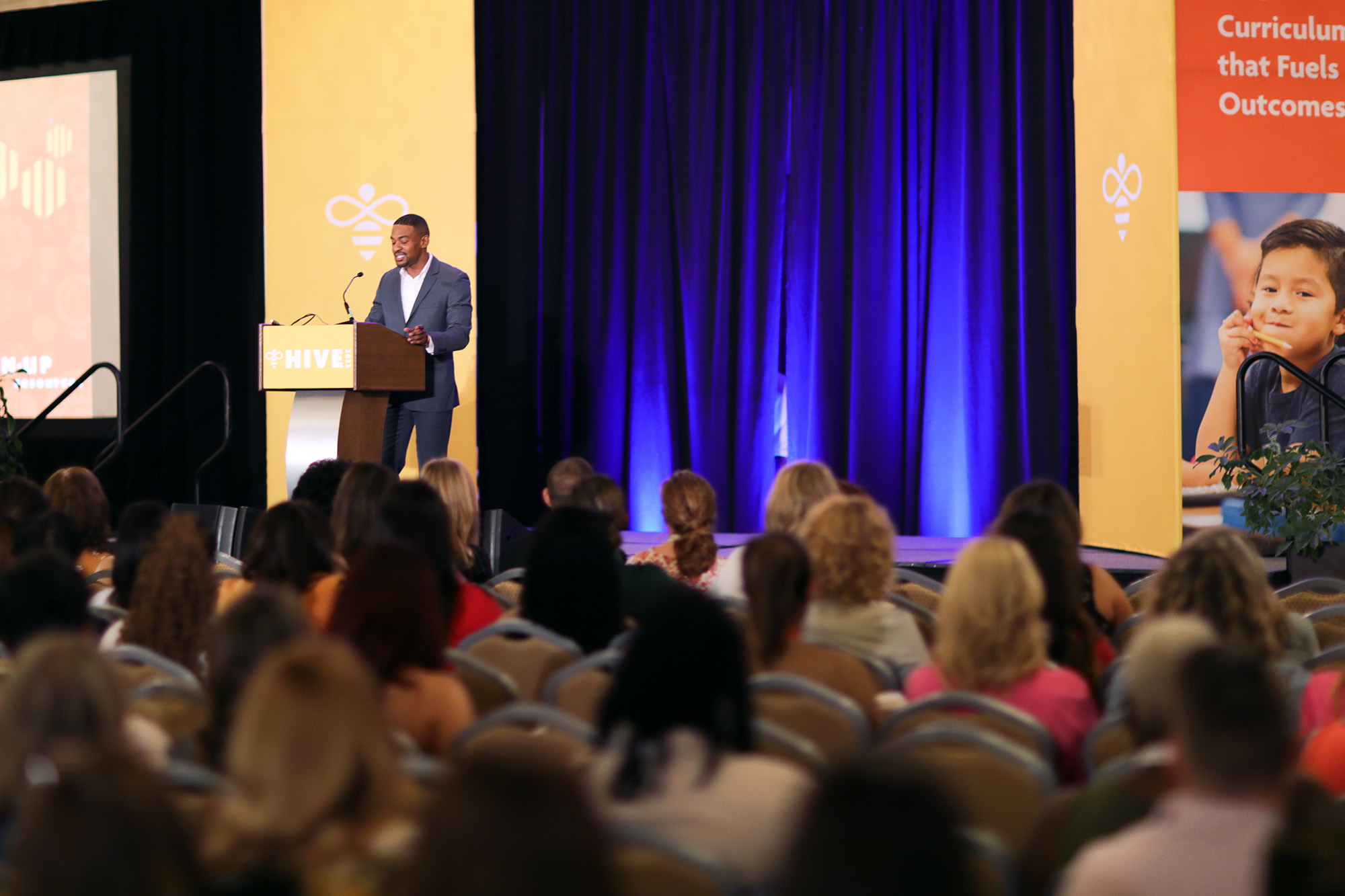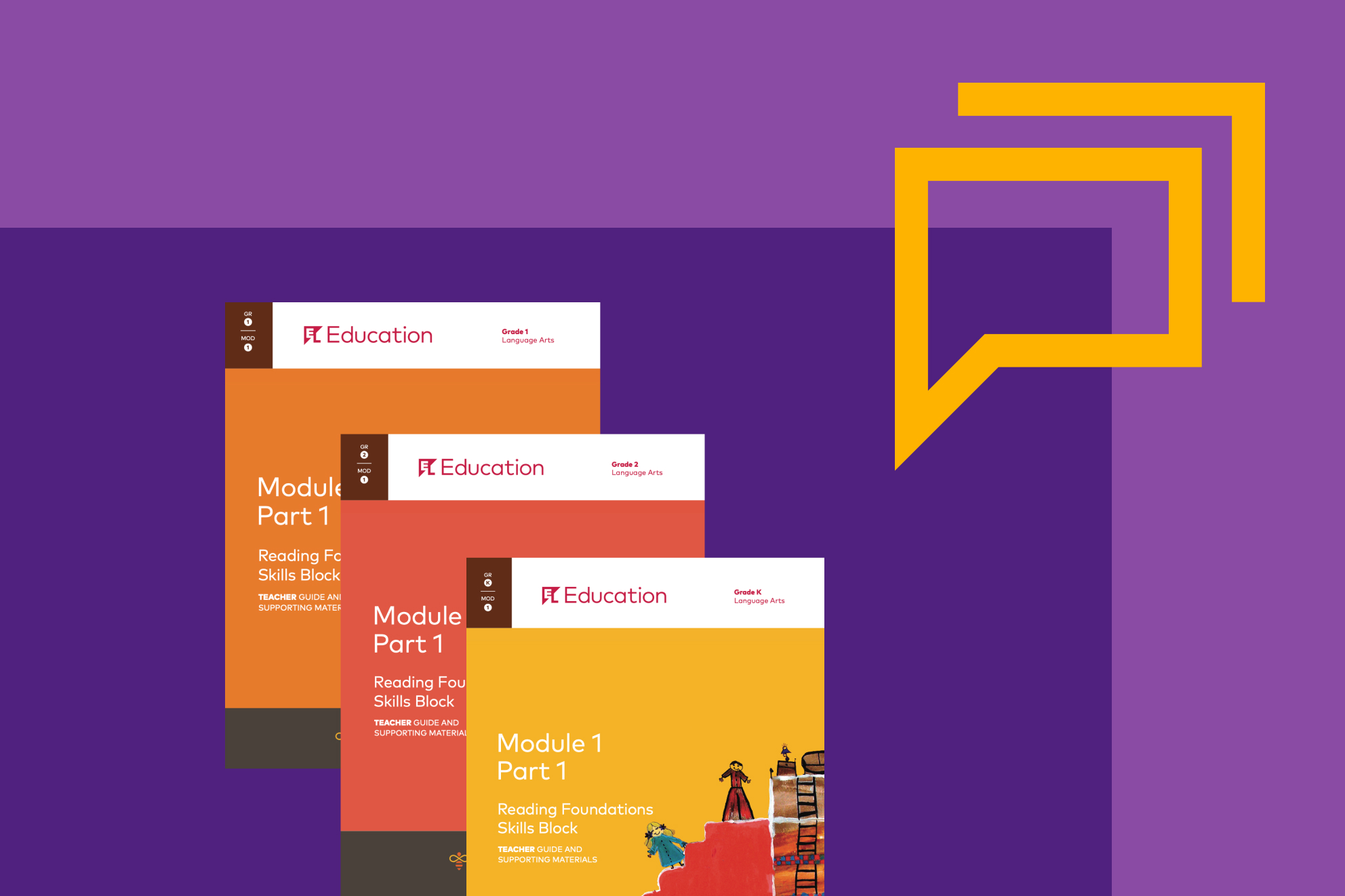This is the first in a multi-part series which reflects on the first months of implementing a new curriculum.
- Read Part 2: Shifting What We See in the Classroom
- Read Part 3: Creating a Culture of Discourse and Community
- Read part 4: What’s Fidelity Got to Do with It?
I’ve been thinking a lot about our educators going through their first year with the Open Up Resources K–8 Math curriculum. The last module in our K–8 asynchronous math launch series ends with a quote from Zaretta Hammond on conscious incompetence. It’s a powerful reminder that, similar to our students, we experience the same feelings of anxiousness, fear and confusion when we are learning something new. By the end of our launch series, our educators generally share that they feel a bit overwhelmed but are ready and excited about getting started with the curriculum. They share that they understand the “why” behind the curriculum design and are eager to give it a try with their students.

But what happens after that “willing to give it a try” stage? We often go into our first year with a new curriculum willing to give it a chance. We hear that it will be challenging at first but that it will get better. We imagine our children will struggle at first but then acclimate. But often the hardest point is a few months in, when you feel like you are not seeing your hard work pay off. Perhaps your students are struggling to work collaboratively. Unit assessments are coming back with concerning scores. Perhaps you haven’t gotten to the end of one single lesson, and you’re wondering if you’ll ever get back on track.
This is a critical moment during your implementation journey.
When you don’t see the progress you expect, it is easy to hit the brakes and make a u-turn – back to your own curriculum, back to how you previously taught, back to what is comfortable. This is, however, the time to stay on the path. This is the time when leaning into Hammond’s words becomes the most challenging and the most important.
“Embrace this stage and use it as a time for inquiry and reflection because this too shall pass.” (Hammond, 2014, p. 153)
Take those words in, particularly the words embrace, inquiry, and reflection. In the hustle and bustle of the beginning of the year, there’s little time for inquiry and reflection but they are critical. Take a look at this gem of a resource on the Colorado Department of Education website – it connects the concepts of grit, mindset and culturally responsive teaching. The article references five things Hammond asks us to keep in mind as we implement instruction. While the focus of the article is to consider how these points can be applied to coach and support students as they learn something new, challenge yourself to read it and think about the implications for your own practice. Why? In a student-led classroom, we serve as facilitators and coaches of learning. For us to be effective in these roles, we need to not only understand the learning process but also how we ourselves learn. This is why inquiry and reflection are so key.
Hammond talks about the idea of the first pancake when learning something new. Think about that first pancake you whip up on Saturday morning. Somehow, it always ends up burnt, messy, and inedible. Learning something new and struggling is that first pancake. Oof, anyone getting flashbacks to their first year teaching, or first time launching something new in the classroom? Did Unit 1 feel like an awful pancake to you? Did it not go as planned despite your best efforts? Accept it. Channel it. Learn from it.
When we accept that struggling – even failing – is normal, we can more easily learn from it. This is the time when it’s easiest to throw in the towel. It’s hard not to get our emotions involved—our ego is hurt. We want to proclaim that “It doesn’t work.” It is hard to watch our students struggle, and to watch our best efforts result in less than desirable results. Remember that these are normal growing pains; they are not a reflection of you or your teaching. Instead reframe them, as Hammond suggests, as opportunities for learning. Approach these moments with inquiry and reflection, and consider one or two things that can be tweaked or adjusted.
In the next part of this blog series, we’ll take a look at some of the most common pain points we hear from educators at the start of the year and brainstorm strategies to approach them. In the meantime, share your reflections on the notion of conscious incompetence with us using #OpenUpMath on twitter, and learn more about our professional learning offers on the Open Up Resources website.
 Vi Tamargo (@vi_tamargo)
Vi Tamargo (@vi_tamargo)
Professional Learning Math Specialist Academics, Equity & Social Justice Team
During her years in the classroom, Vi served K–8 grade students from Oregon to New York, with a specific focus on mathematics education. She also served as an instructional coach and math interventionist. Helping each child and educator find a love for mathematics was what inspired her daily. She now brings that commitment into her work at Open Up Resources, thinking innovatively about how professional learning can be a catalyst for equity, access and mathematical joy. An Oregon native, she now resides in California with her two young children and her husband. Vi enjoys Barre3, running, writing, crocheting, and discovering new coffee shops and food spots.













